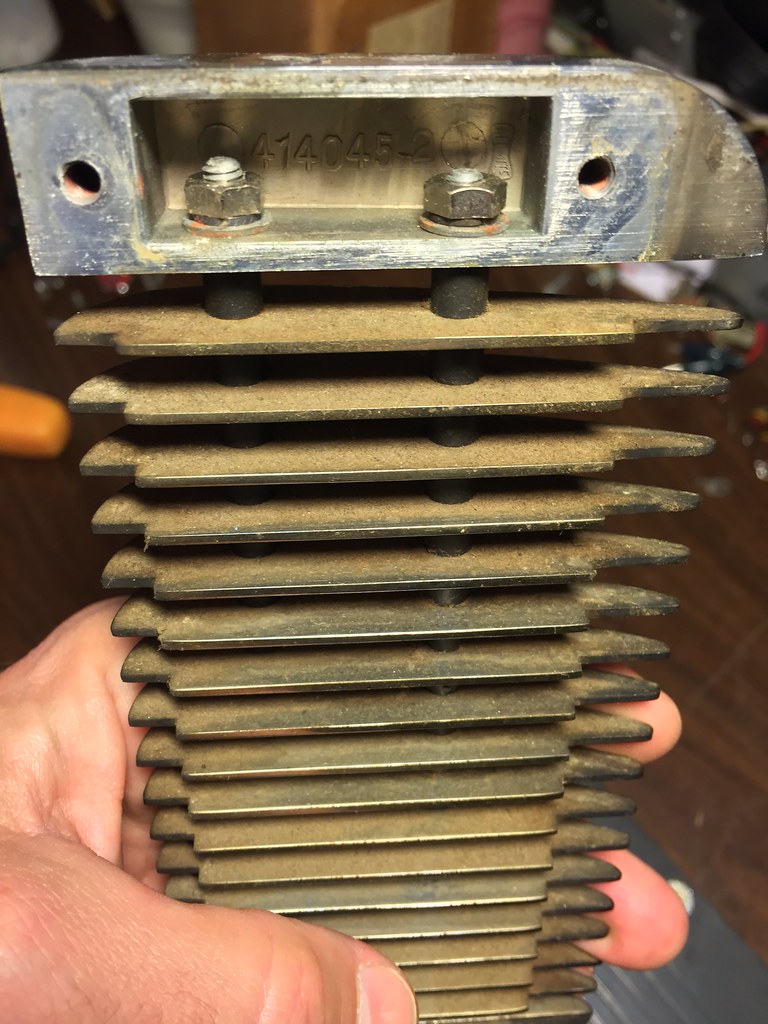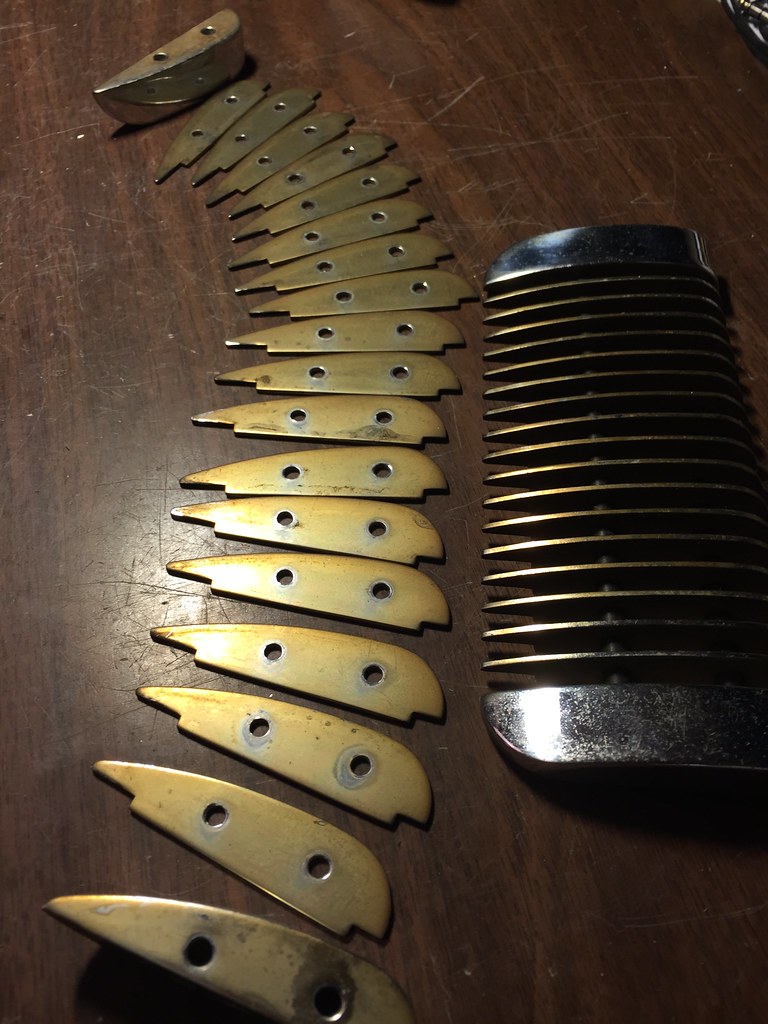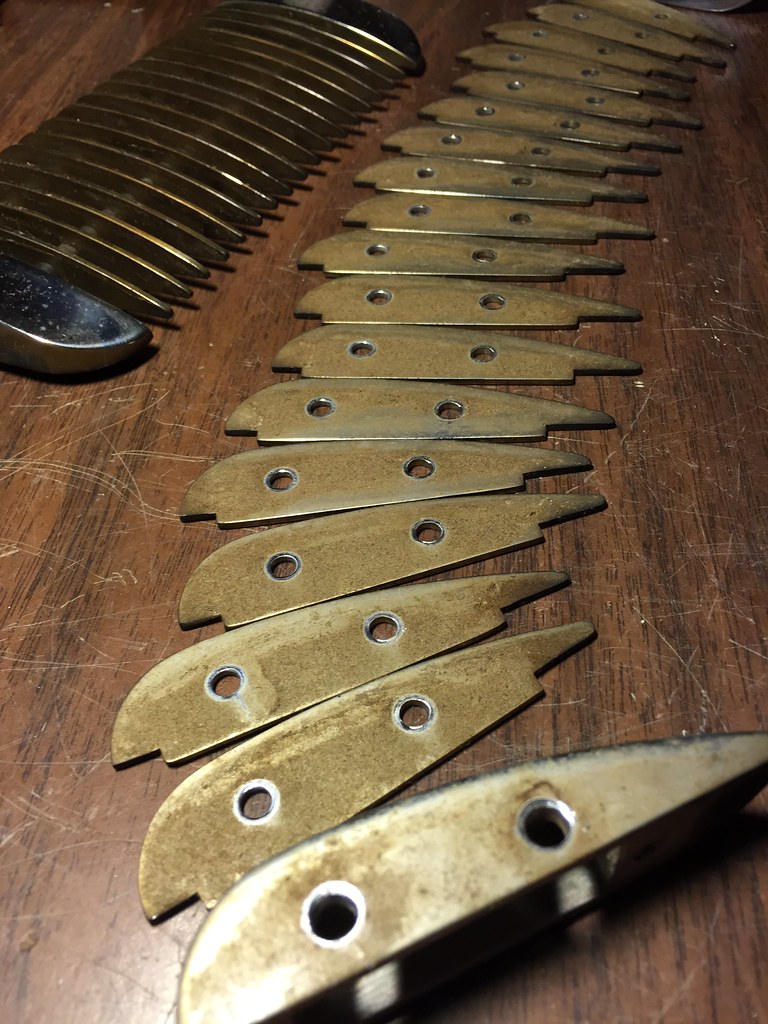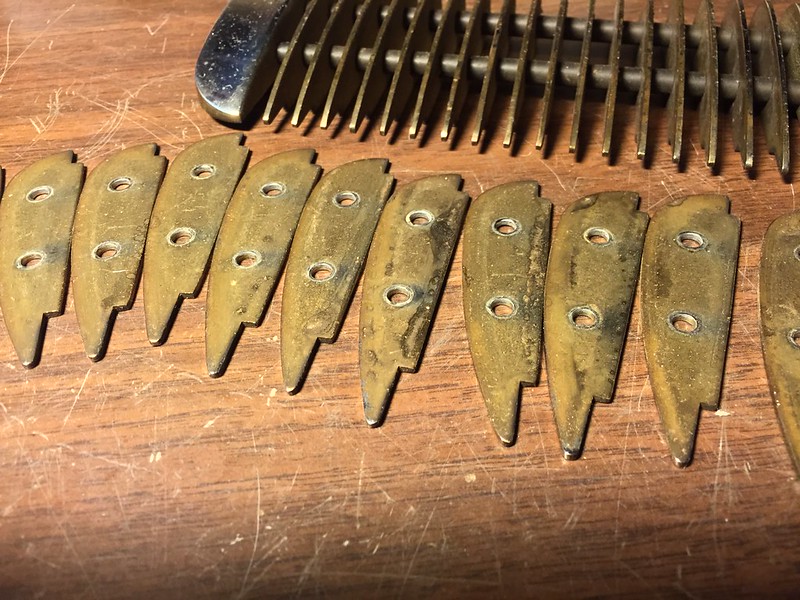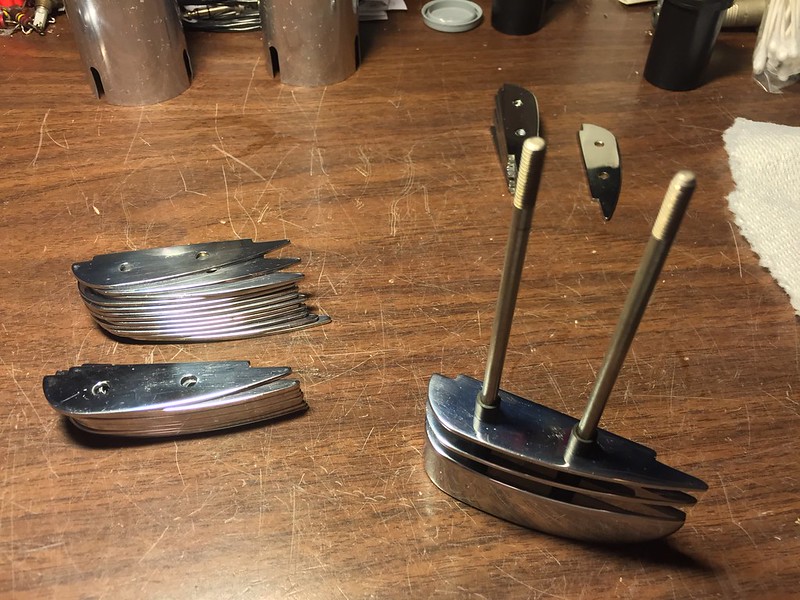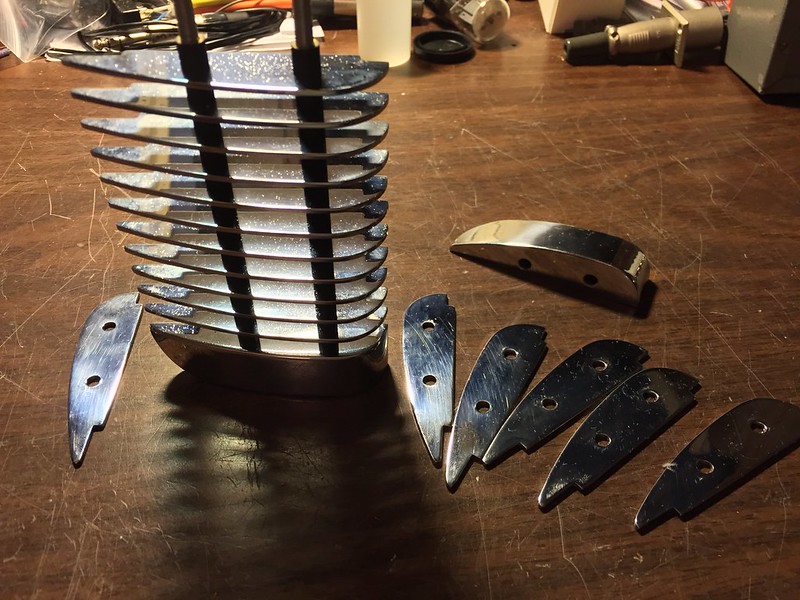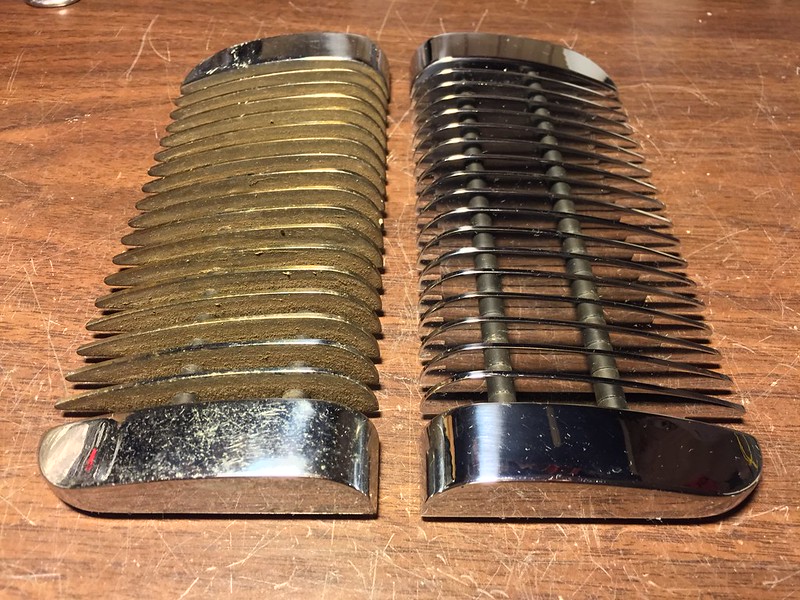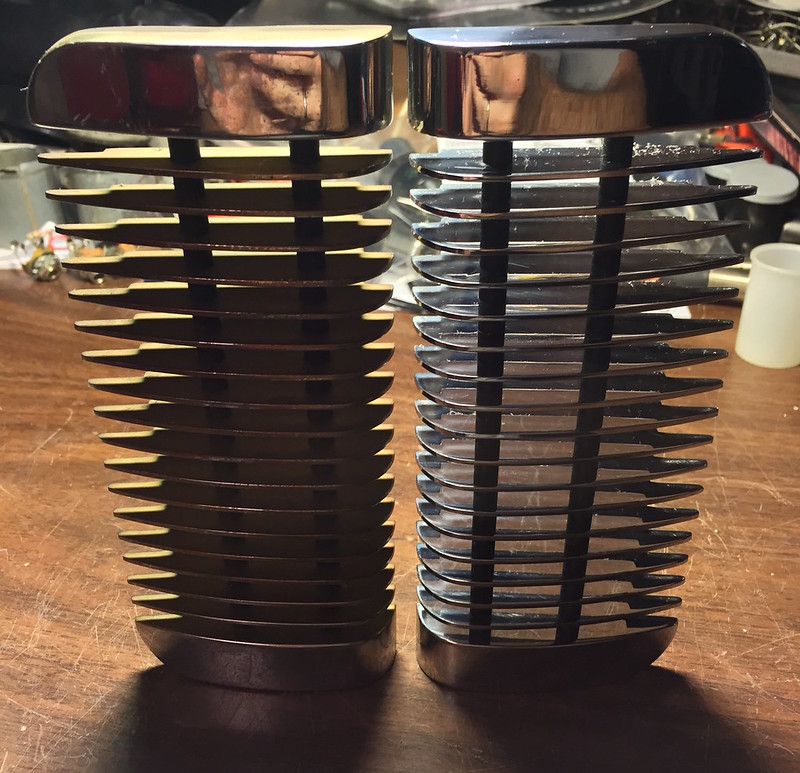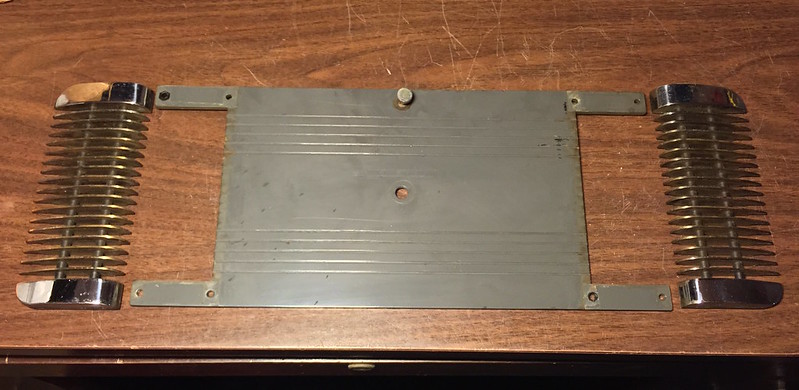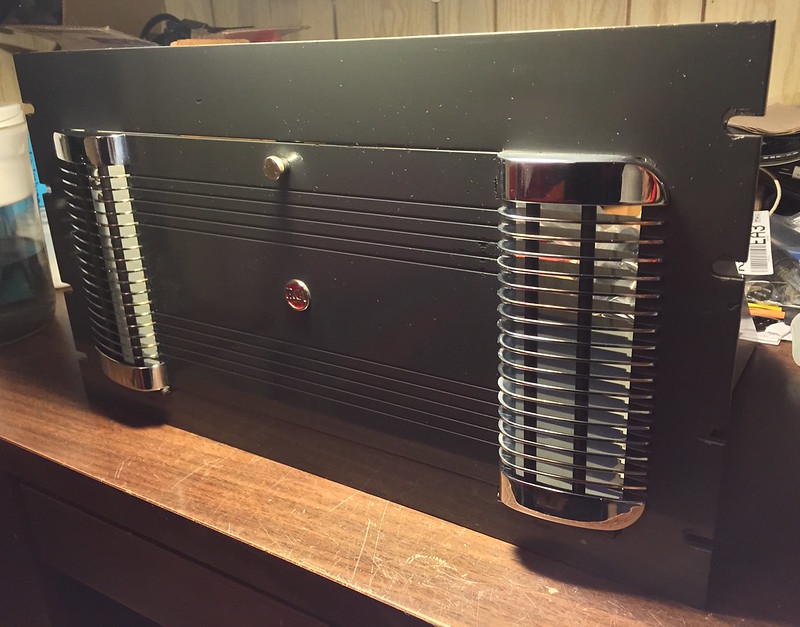Last spring I got around to restoring a couple of RCA 55-B’s, circa 1938. Partial cleaning done, more to do.
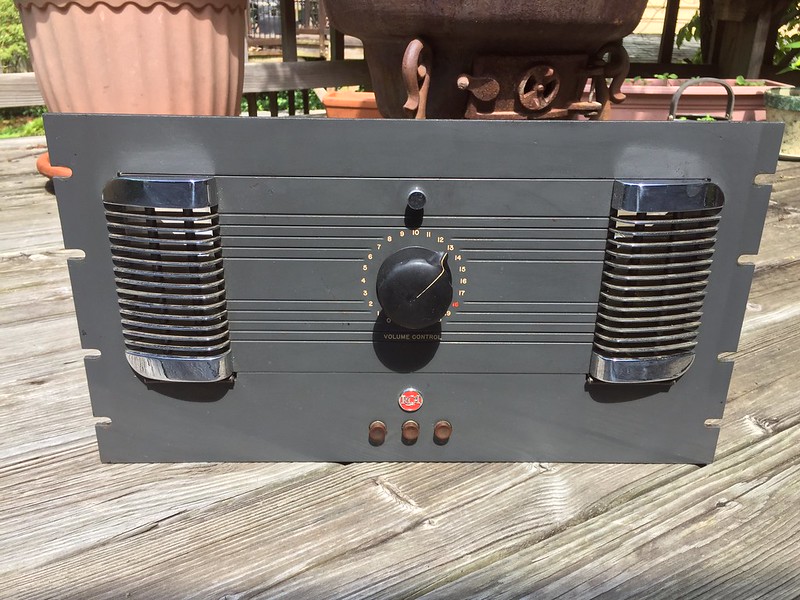
Cosmetic and ergonomic design by industrial designer John Vassos, well known for many other famous Art Deco designs. He headed RCA’s design department for several decades, and was responsible for the famous ‘mushroom’ knob first found here.
The basic circuit was used from 1934 through 1950 for program amp use in various rack mount and console versions. 40-C, 40-D, 84-A/B, 55-A, 55-B, 83-A/B/C, and the 76 console program amp, all the same family. Most versions have two or even three single ended stages, an interstage transformer, then a push-pull output stage that can deliver 1W into 600 ohms, or feed a speaker. Look at the program amp in the 76 series consoles for an example; this is a short-loaded version of the 76 console program amp. There are very similar amps in the Photophone lines also, though very obscure in comparison.
The earliest versions of these amps use 77’s and 89’s, mid period may be 1603’s instead of 77’s, then they moved to octal 1620 and 6F6. It's interesting the pretty obscure 89 tube was used rather than the more common 42, same shift from the 96 to 86 limiter. Virtually all 89 or 89Y you encounter are in US Navy contract boxes, and I'm not aware of anything outside of RCA broadcast that uses it. The vast majority are 89Y's, which are a low loss socket for RF use. The earlier 59 tube is somewhat similar to the 89.
As a side note to the puzzling aspect of the 96 limiter preceding the 86 limiter, the 80 series was the ‘Economy’ line (83-A/B/C, 84-A/B, and thematically, the 76-B/C/D consoles), there was a ‘Standard’ line (40-C, 55-A), and this 55-B is the ‘Deluxe’ line product along with the 40-D. Mostly the same circuits and transformers in various cosmetic packages. The post-war BA-xx series is the new-design extension of the Economy line, with the old Standard packages and the Deluxe line dropped.
This version is a 2 stage amp, it has just one single ended stage which is fed from a transformer secondary connected pot. The input transformer is unique here, it has 600 or 20K input options, mainly intended for 20K to bridge and split main program lines for distribution. It demands a matching load on the 50K secondary (provided by the pot), rings like crazy as soon as you lighten the secondary load. Specs say it’ll take a +46VU input signal with the bridging connection……I’m not buying that the Daven pot will though!
The chrome plated chassis was advertised as corrosion resistant, but after 80 years of neglect and tobacco smoke, most have some degree of crazing and pitting. A fold down front door gives tube access from the front, and the chassis is hinged to the rear of the rack shelf for access to the guts from the back, ideally it didn’t have to be removed from the rack for service. The chrome louvres on the front are totally overbuilt - individual plated pieces with brass rod and spacers threaded through, tightened with hidden nuts then screwed to the door and its mounting hinge. Taking those apart for cleaning is very time intensive.
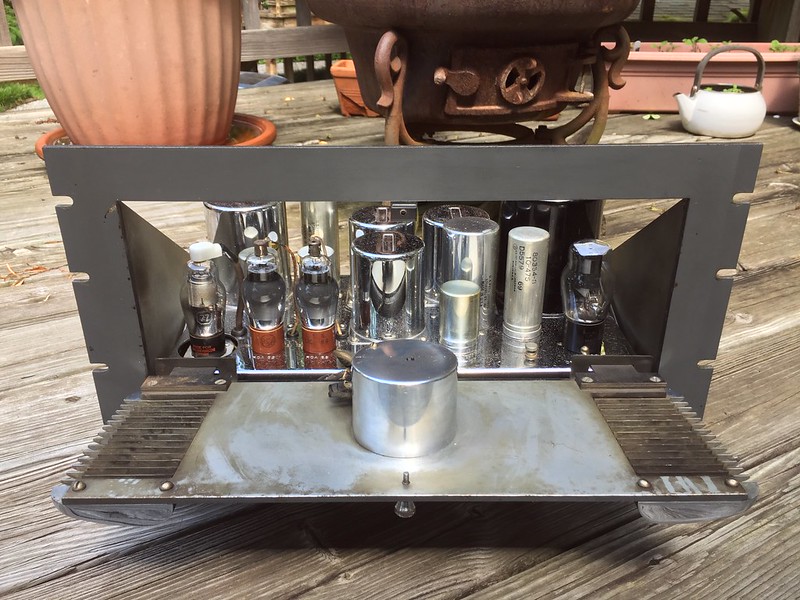
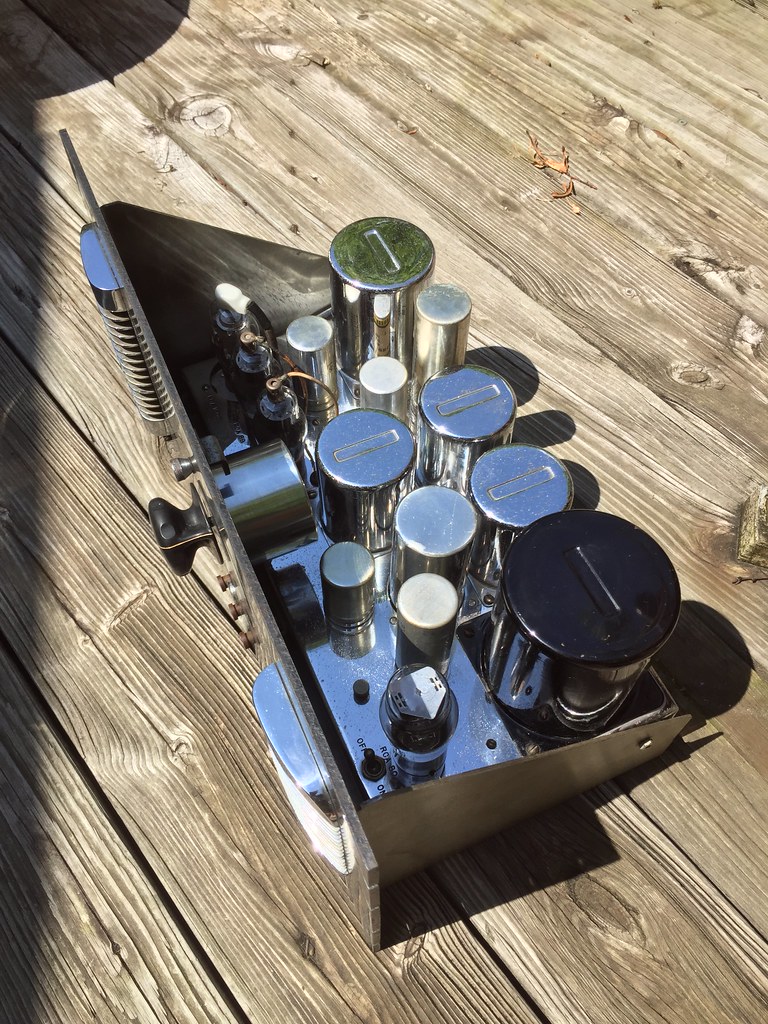
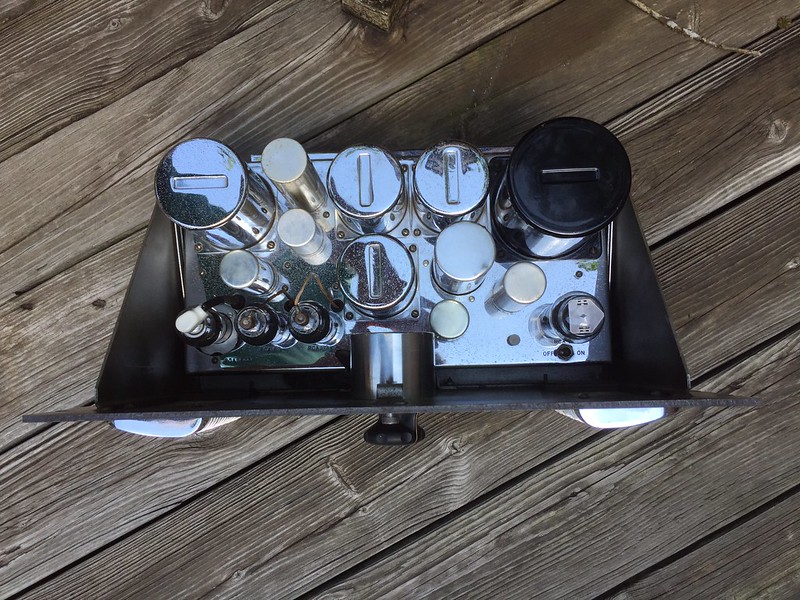
Excluding a bleeder resistor and a pair of interstage secondary load resistors, all other resistors are multi-chamber wire wound types, so noise contribution equivalent to modern types. The Economy and BA-xx lines went with carbon resistors, where the Standard and Deluxe used custom wire wound types in almost all audio positions.
Some of the electrolytics still measure ok for capacitance, but all very high for ESR. The one film coupling cap ‘worked’, but ESR was so high it actually rolled off some treble, that I’ve never encountered otherwise. I found raising the value from 0.5 to 0.69 removed a 16Hz bump, making these flat to 12Hz. These were turned on continually from 1939 through about 1989, so pretty impressive life performance overall.
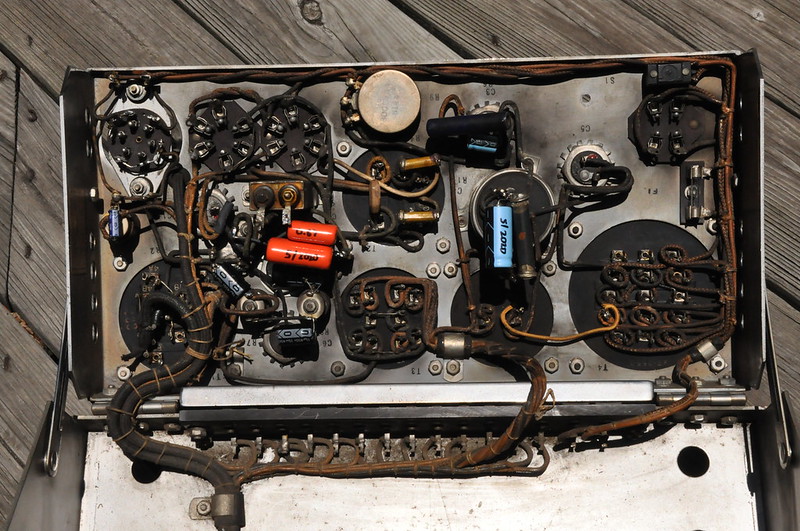
They measure great and match very well, I’ve been using them as make-up amps after passive mix bus summing. -1dB is roughly 10Hz and 16kHz, very flat in between. On a few occasions I’ve used them as preamps, though power supply hum residuals would not suggest ribbons and quiet sources. They are fine for lead vocal with a condenser. In the dedicated program amp and console versions the power transformer or entire PSU is external, the two stage 55-B and the 80 series versions are the only ones with an entirely internal supply.

Cosmetic and ergonomic design by industrial designer John Vassos, well known for many other famous Art Deco designs. He headed RCA’s design department for several decades, and was responsible for the famous ‘mushroom’ knob first found here.
The basic circuit was used from 1934 through 1950 for program amp use in various rack mount and console versions. 40-C, 40-D, 84-A/B, 55-A, 55-B, 83-A/B/C, and the 76 console program amp, all the same family. Most versions have two or even three single ended stages, an interstage transformer, then a push-pull output stage that can deliver 1W into 600 ohms, or feed a speaker. Look at the program amp in the 76 series consoles for an example; this is a short-loaded version of the 76 console program amp. There are very similar amps in the Photophone lines also, though very obscure in comparison.
The earliest versions of these amps use 77’s and 89’s, mid period may be 1603’s instead of 77’s, then they moved to octal 1620 and 6F6. It's interesting the pretty obscure 89 tube was used rather than the more common 42, same shift from the 96 to 86 limiter. Virtually all 89 or 89Y you encounter are in US Navy contract boxes, and I'm not aware of anything outside of RCA broadcast that uses it. The vast majority are 89Y's, which are a low loss socket for RF use. The earlier 59 tube is somewhat similar to the 89.
As a side note to the puzzling aspect of the 96 limiter preceding the 86 limiter, the 80 series was the ‘Economy’ line (83-A/B/C, 84-A/B, and thematically, the 76-B/C/D consoles), there was a ‘Standard’ line (40-C, 55-A), and this 55-B is the ‘Deluxe’ line product along with the 40-D. Mostly the same circuits and transformers in various cosmetic packages. The post-war BA-xx series is the new-design extension of the Economy line, with the old Standard packages and the Deluxe line dropped.
This version is a 2 stage amp, it has just one single ended stage which is fed from a transformer secondary connected pot. The input transformer is unique here, it has 600 or 20K input options, mainly intended for 20K to bridge and split main program lines for distribution. It demands a matching load on the 50K secondary (provided by the pot), rings like crazy as soon as you lighten the secondary load. Specs say it’ll take a +46VU input signal with the bridging connection……I’m not buying that the Daven pot will though!
The chrome plated chassis was advertised as corrosion resistant, but after 80 years of neglect and tobacco smoke, most have some degree of crazing and pitting. A fold down front door gives tube access from the front, and the chassis is hinged to the rear of the rack shelf for access to the guts from the back, ideally it didn’t have to be removed from the rack for service. The chrome louvres on the front are totally overbuilt - individual plated pieces with brass rod and spacers threaded through, tightened with hidden nuts then screwed to the door and its mounting hinge. Taking those apart for cleaning is very time intensive.



Excluding a bleeder resistor and a pair of interstage secondary load resistors, all other resistors are multi-chamber wire wound types, so noise contribution equivalent to modern types. The Economy and BA-xx lines went with carbon resistors, where the Standard and Deluxe used custom wire wound types in almost all audio positions.
Some of the electrolytics still measure ok for capacitance, but all very high for ESR. The one film coupling cap ‘worked’, but ESR was so high it actually rolled off some treble, that I’ve never encountered otherwise. I found raising the value from 0.5 to 0.69 removed a 16Hz bump, making these flat to 12Hz. These were turned on continually from 1939 through about 1989, so pretty impressive life performance overall.

They measure great and match very well, I’ve been using them as make-up amps after passive mix bus summing. -1dB is roughly 10Hz and 16kHz, very flat in between. On a few occasions I’ve used them as preamps, though power supply hum residuals would not suggest ribbons and quiet sources. They are fine for lead vocal with a condenser. In the dedicated program amp and console versions the power transformer or entire PSU is external, the two stage 55-B and the 80 series versions are the only ones with an entirely internal supply.
















![Electronics Soldering Iron Kit, [Upgraded] Soldering Iron 110V 90W LCD Digital Portable Soldering Kit 180-480℃(356-896℉), Welding Tool with ON/OFF Switch, Auto-sleep, Thermostatic Design](https://m.media-amazon.com/images/I/41gRDnlyfJS._SL500_.jpg)

















